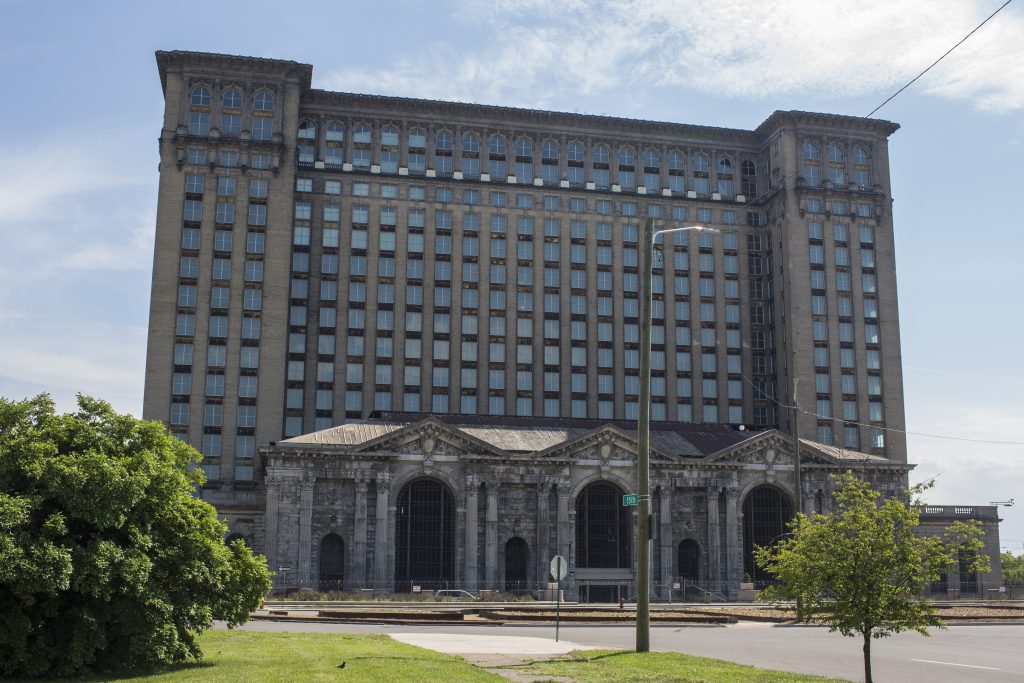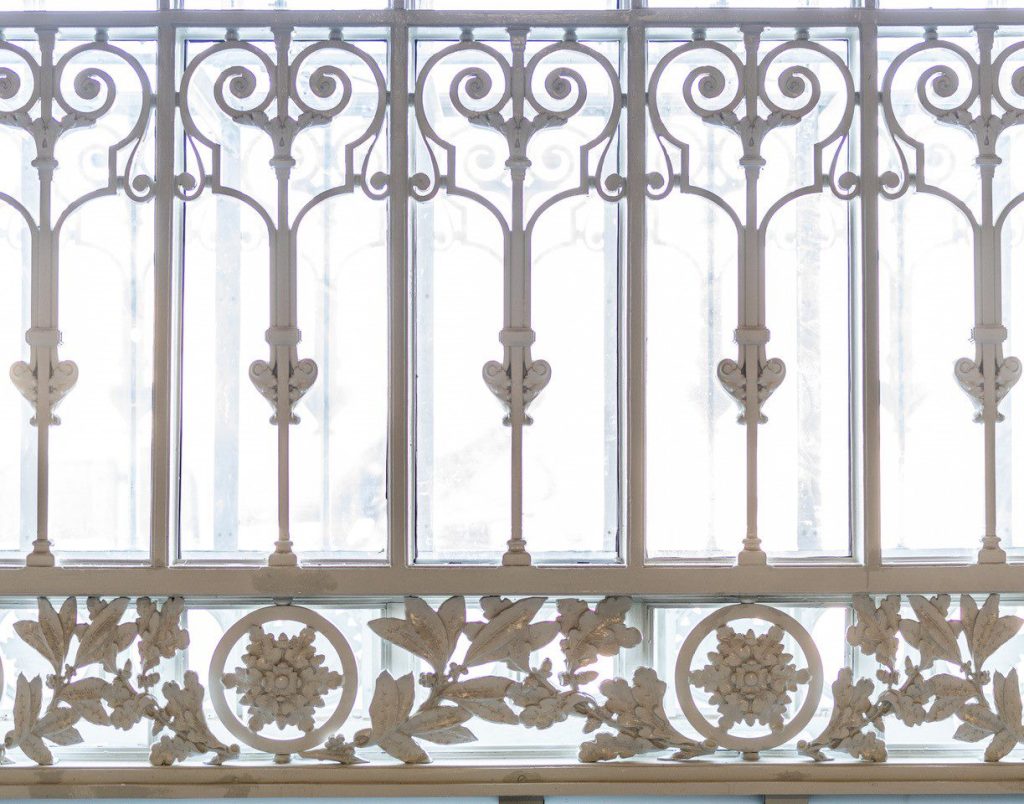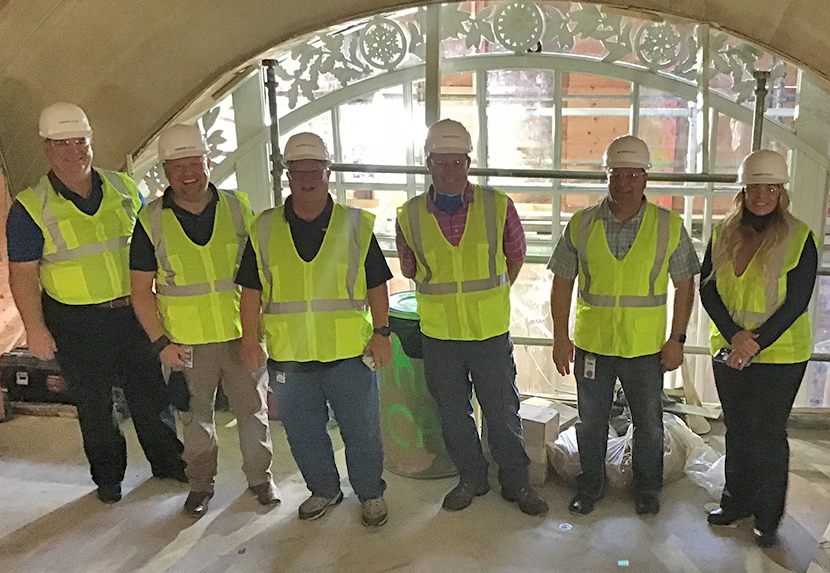Multinational automotive manufacturer Ford has deployed a combination of 3D scanning and printing to help restore the historic Michigan Central Station.
By scanning and reverse engineering the damaged Beaux Arts-style architectural elements that adorn the station’s windows and ceilings, Ford has managed to recreate them with precise detail. In using 3D printing to produce nearly 550 of these rosette and filigree replicas, the firm is also said to have been able to make them much lighter, while keeping them true to the building’s original style.
“Ford could have decided to just modernize Michigan Central Station,” explained Harold Sears, Technical Leader of Additive Manufacturing Technologies at Ford. “But they’re taking great efforts to make sure this thing really reflects the way this building looked and felt inside and outside.”

Ford’s extensive 3D printing expertise
Having adopted an SLA 3 system as long ago as the late-1980s, Ford is known to have been keen on integrating 3D printing into its vehicle design and production workflow for some time now. Despite this, until recently, the competitive world of automotive has meant that many of the firm’s applications of the technology have been kept under wraps, but it has now gradually begun to reverse this trend.
In an interview with AMUG speaker Ellen Lee, for instance, it was revealed that Ford uses 3D printing for fluid flow visualization and wind tunnel testing, as well as the creation of jigs, fixtures and end-use car parts. This interview also uncovered that the company’s Advanced Manufacturing Center (AMC) team is actively working on applications for the technology, and shed light on some of its latest innovations.
One such initiative has seen Ford release CAD files that enable its customers to 3D print pickup truck accessories such as cup holders or phone mounts, while in another, it has worked with HP to develop a means of recycling 3D printing waste into F-250 parts.
More recently, the automotive manufacturer announced that it had begun using autonomous robots to operate 3D printers, as a means of creating custom parts for its Mustang Shelby GT500 sports car. Nicknamed ‘Javier,’ the KUKA-built bot is able to do so thanks to a Ford-developed interface, which allows it to ‘speak the same language’ as its other systems, and operate them without human interaction.

Renovating an architectural classic
Ford’s Michigan Central Station revamp started in 2018, amid discussions on how 3D printing could be used to help restore some of the elements which adorn its ceilings and large arch windows. Over the last century, many of the ex-train depot’s finer pieces have been lost to time, and while photos were initially used as a basis for creating replicas, it soon became clear that 3D scanning was more viable.
This began in earnest after some of the originals were donated back to Ford, allowing its non-destructive evaluation team to reverse engineer them via a CAD process that restored each scan to its initial design. In practice, the engineers’ approach saw them combine broken pieces and redesign missing areas, before adding anchor points to others and carrying out resizing and smoothing if needed.
What followed was months of 3D scanning over the course of 2020, then a 3D printing phase at Ford’s AMC in Redford Township, Michigan, resulting in hundreds of replicas in 20 different variants. Many of these 12 inch-wide circular rosettes, each featuring a 26 inch laurel or oak leaf pattern, were created with slight design modifications to allow for their hanging in separate areas of the station.
Though 3D printed from a thermoplastic that makes them easier to hang than their originals, some of the window replicas are to be fitted with custom frames, while those on the ceiling will be affixed to 6.5-inch tiles. The historic station’s overall restoration isn’t set to finish until late-2022 to early-2023, but Ford’s team has been quick to hail the project as a success story for the technology’s wider development.
“We made these parts in-house – Ford made these parts,” added Bob Bedard, Supervisor of Additive Manufacturing Plastics at Ford. “Part of our drive as a company is to bring new technologies into production applications when they’re ready, and to always be innovating to find a better, more sustainable, safer way to bring things to fruition. It’s a beautiful thing we could do that for this priceless landmark.”

3D scanning in the field of restoration
Combining 3D scanning, printing and reverse engineering is a well-known recipe for automotive and architectural restoration among engineers, and it has been used for these purposes multiple times before. In an episode of the British TV show Car SOS last year, a team deployed the technologies to recreate the console of a 1970s Ford Cortina Mark III X, while doing so to the show’s tight timeline.
3D scanning and printing have been deployed several times to renovate damaged architecture as well, with Prototek working with Opera to restore the Baptistery of Florence back in 2020. Specifically, some of the nearly 900-year-old building’s bronze doors were suffering from deterioration due to weather and pollution, thus it was decided that they’d be replaced with replicas made via the technologies.
When it comes to accurately reproducing the art forms and artifacts of the past, Scan the World has also established itself as an expert in the field. Over the last eight years, the organization has built up a free database of over 20,000 printable artifacts captured via 3D scanning, in its bid to create a community-led ‘open-source museum.’
To stay up to date with the latest 3D printing news, don’t forget to subscribe to the 3D Printing Industry newsletter or follow us on Twitter or liking our page on Facebook.
For a deeper dive into additive manufacturing, you can now subscribe to our Youtube channel, featuring discussion, debriefs, and shots of 3D printing in-action.
Are you looking for a job in the additive manufacturing industry? Visit 3D Printing Jobs for a selection of roles in the industry.
Featured image shows Michigan Central Station as it was in 2018. Photo via Ford.


